This post may contain affiliate links. Please read our privacy policy.
When it comes to baking, sugar is one of the most important ingredients we use. But do you really know the difference between all of the types of sugar?
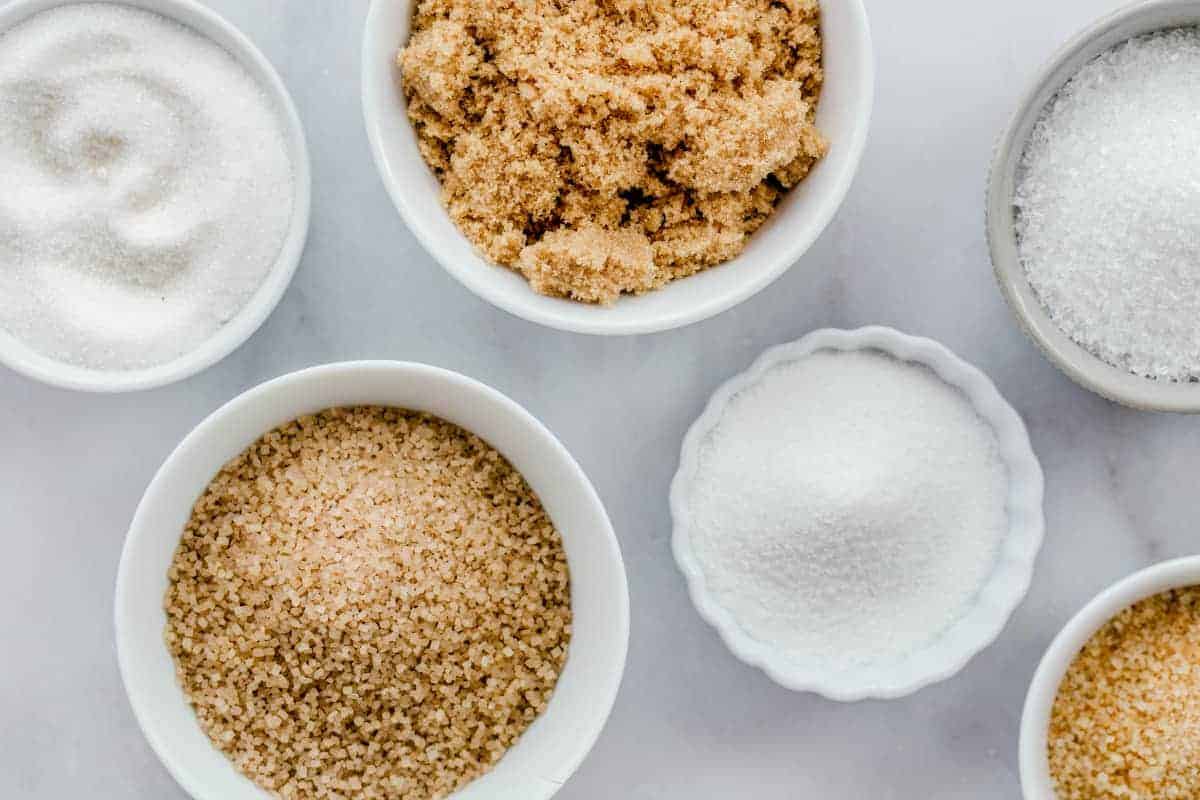
Sugar is an integral part of the baking that we do day to day.
Of course, the sweetness it provides to things like cookies and cakes is obvious. In breads and rolls, however, it feeds the yeast that makes for a beautiful rise.
For most people, the first thing that comes to mind when hearing the word sugar is white, granulated sugar. It’s the type that America uses most often for baking and sweetening our morning cup of coffee.
However, the more often you bake, the more different types of sugar you may come across.
In an effort to expand my own baking horizons, I thought we should discuss the types of sugar that are available for all of our baking needs. Are you ready to talk sugar?
WHAT IS GRANULATED SUGAR?
Granulated sugar is also sometimes known as white sugar, or “regular” sugar.
Granulated sugar has had all of the naturally present molasses refined out of it. It is the sugar that is most commonly used in baking.
The fine crystals in granulated sugar don’t cake together, which makes it perfect for measuring, sprinkling onto food and dissolving into drinks.
Granulated sugar is what I use in most of my recipes, including The Best Chocolate Cake recipe.
IS CONFECTIONERS’ SUGAR THE SAME AS POWDERED SUGAR?
New bakers often get confused when they see the words “powdered sugar” and “confectioners’ sugar” used interchangeably. But this is because confectioners’ sugar and powdered sugar are the same thing!
Powdered or confectioners’ sugar is granulated sugar that has been finely ground and mixed with a small amount of cornstarch to prevent caking.
This is the sugar we commonly use for frostings, glazes, and that snowy covering on doughnuts that no doubt is all over your face and hands with the first bite.
Puppy Chow is a recipe that famously uses confectioners’ sugar for that beautiful white coating.
WHAT IS ICING SUGAR?
Icing sugar is simply another name for powdered sugar or confectioners’ sugar.
While it is a less common name here in the U.S., it makes sense since icing, powdered or confectioners’ sugar is so perfect for making icings, frostings and fillings, such as the filling in my Homemade Oatmeal Cream Pie recipe.
WHAT IS COARSE SUGAR?
As you can tell from its name, coarse sugar has much larger crystals than regular white sugar.
The larger size of the crystals (about the size of pretzel salt) makes the sugar stronger and more resistant to heat. This type of sugar also helps to give baked goods or candy a little texture.
Coarse sugar is used mainly for decorating and comes in a rainbow of colors. Because of this, it is sometimes called decorating sugar.
I like topping my Cherry Hand Pies recipe with coarse sugar for a little texture and added sweetness.
WHAT IS SANDING SUGAR?
Sanding sugar is another large-crystal sugar. It is between white granulated and coarse sugar in size.
Sanding sugar is another decorating sugar and comes in many colors. It also reflects light and gives of a sparkly shine. And, who doesn’t love their baked goods sparkly?
Sanding sugar is a great addition to any DIY Cookie Decorating Station.
WHAT IS BROWN SUGAR?
Brown sugar is white sugar that has had cane molasses added to it.
Brown sugar can harden if left open to the air, so it is best stored in an airtight container. If your brown sugar has hardened, you can microwave it for a few seconds, or place a piece of bread in the bag and leave it for a day.
DIFFERENCE BETWEEN LIGHT AND DARK BROWN SUGAR
When you go to the store, you’ll see two types of brown sugar: light brown sugar and dark brown sugar.
These names – light or dark – refer to the amount of molasses that is present in the sugar.
Light brown sugar is what is used more often in baking, sauces and, glazes. I prefer light brown sugar in my favorite Peanut Butter Blossoms recipe.
Dark brown sugar, because of the rich molasses flavor, is used in richer foods, like gingerbread. Try dark brown sugar in Savory Sweet Life’s Chocolate Chip Cookies.
HOW TO MAKE BROWN SUGAR
If you’re out of brown sugar, it is easy to make at home in a pinch. All you need to know how to make brown sugar is:
1 pound granulated sugar
3 ounces molasses, by weight
Make sure everything is incorporated thoroughly in a food processor, and you can store it for up to a month!
WHAT IS SUPERFINE SUGAR?
Superfine sugar is also sometimes called ultrafine sugar, bar sugar or caster sugar.
These sugars have the smallest crystal size of white granulated sugar.
Superfine sugar is generally used in making delicate or smooth desserts such as mousse, meringues or puddings. It also is great for sweetening cold beverages because it doesn’t need heat to dissolve.
WHAT IS TURBINADO SUGAR?
Turbinado sugar is raw sugar that has only had the surface molasses washed off. It is light in color, usually has a large crystal, and is slightly lower in calories than white sugar due to the moisture content.
Turbinado sugar is mainly used in sweetening beverages, but can also be used in baking.
WHAT IS MUSCOVADO SUGAR?
Muscovado sugar, also known as Barbados sugar, is a type of British brown sugar.
Muscovado sugar is very dark brown in color and has more molasses than light or dark brown sugar. The sugar crystals are a little larger than regular brown sugar and the texture is stickier.
Muscovado sugar is used in sweets with rich flavors such as gingerbread, coffee cake, and fudge.
WHAT IS DEMERARA SUGAR?
Demerara sugar is another type of sugar that is very popular in England. In the U.S., the most comparable sugar is turbinado sugar – because they are both “raw”.
Demerara sugar is a large-grained, crunchy sugar that hasn’t had all of the molasses refined out.
Demerara sugar is great in tea, coffee, dissolved into hot cereals or sprinkled onto baked goods.
While you might feel like you just took a class on the types of sugar, who couldn’t use a little extra knowledge about such an important ingredient? Now it’s time to make sure you are stocked up and ready to bake!
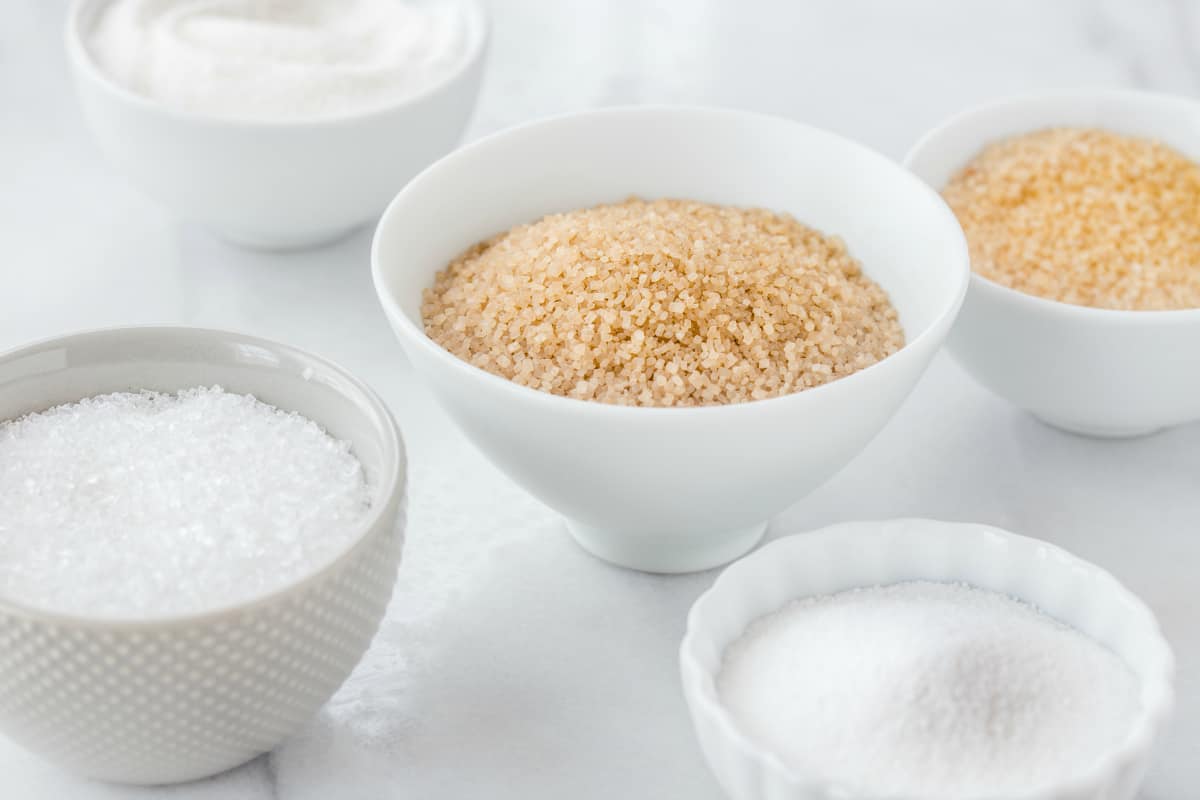
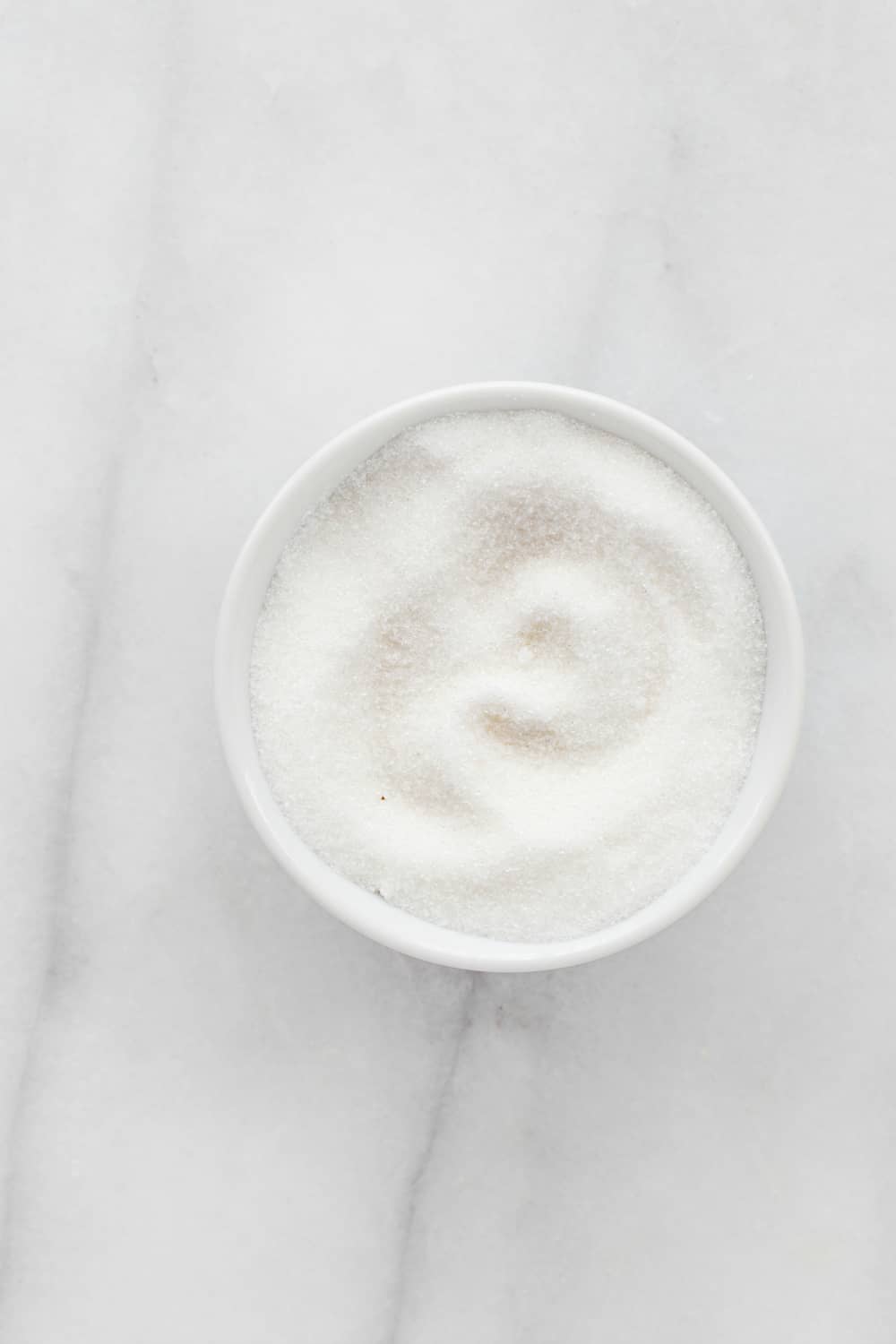
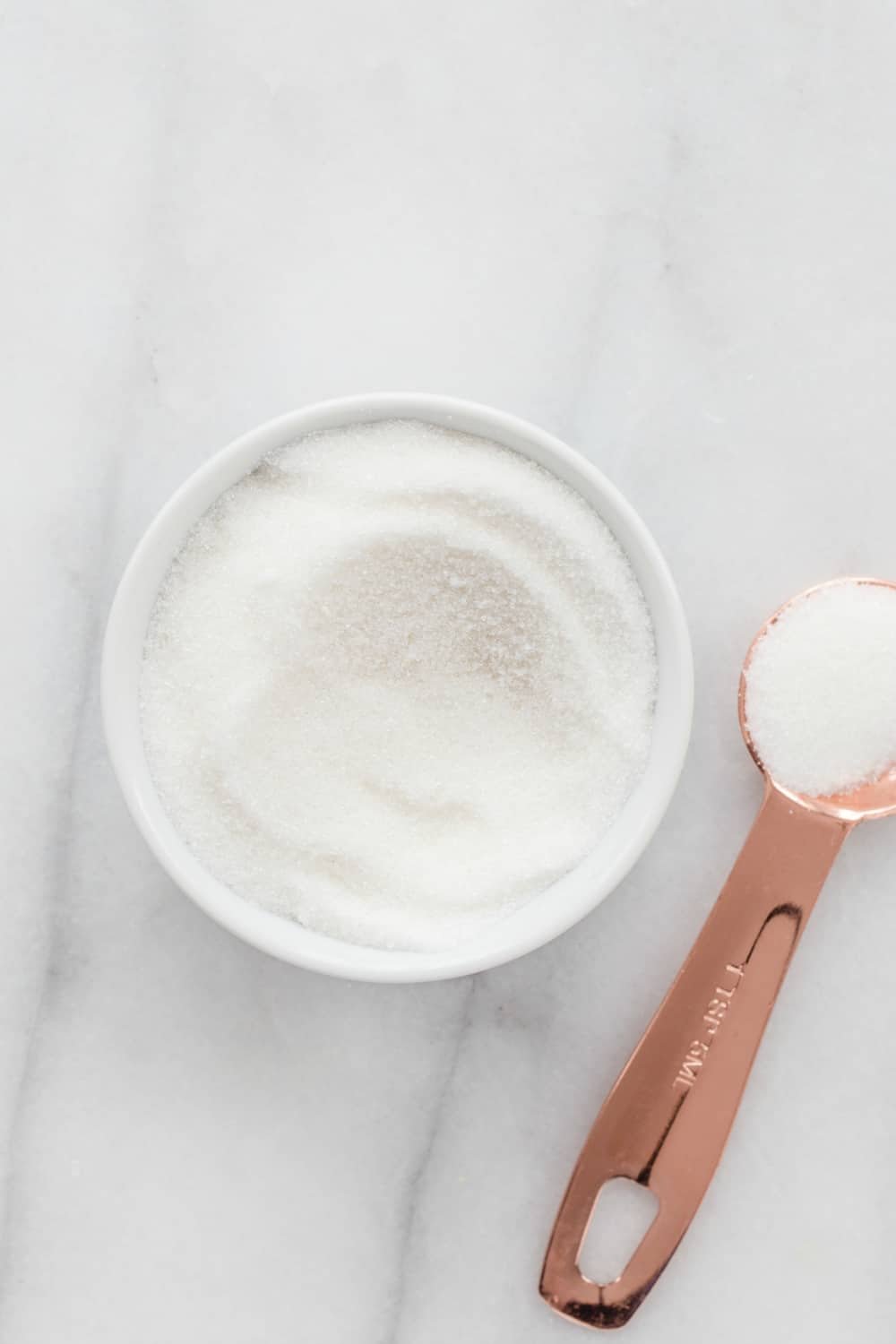
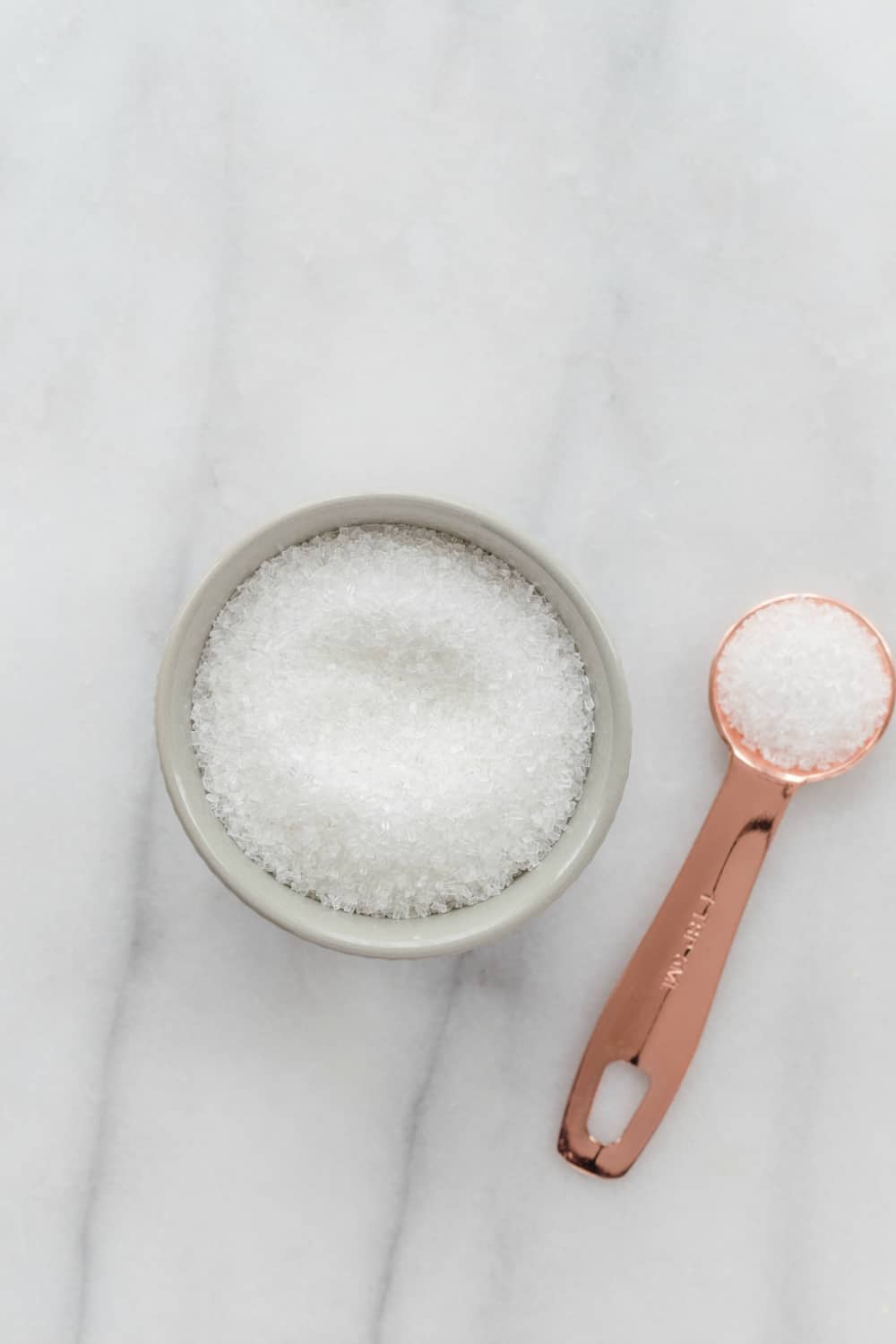
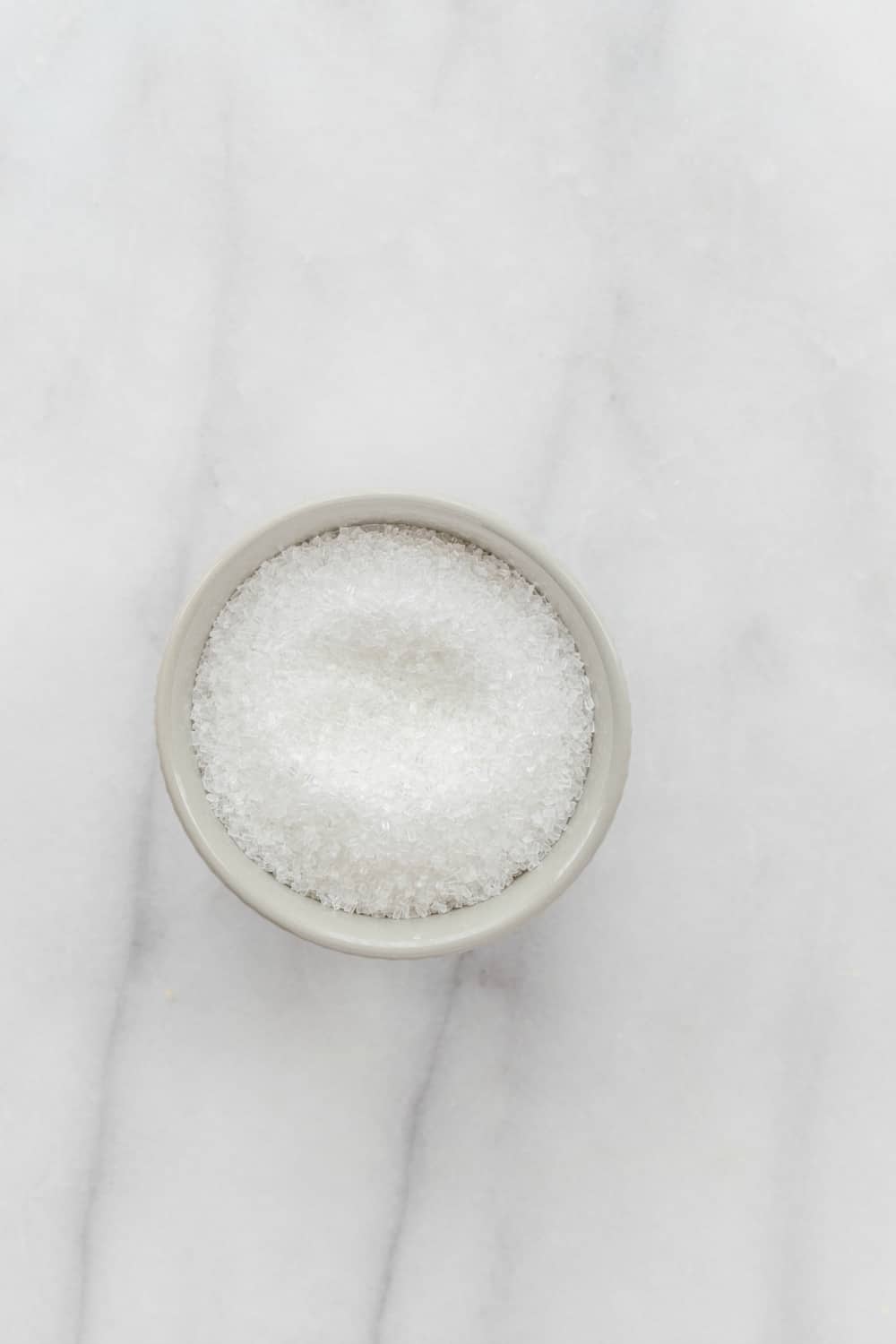
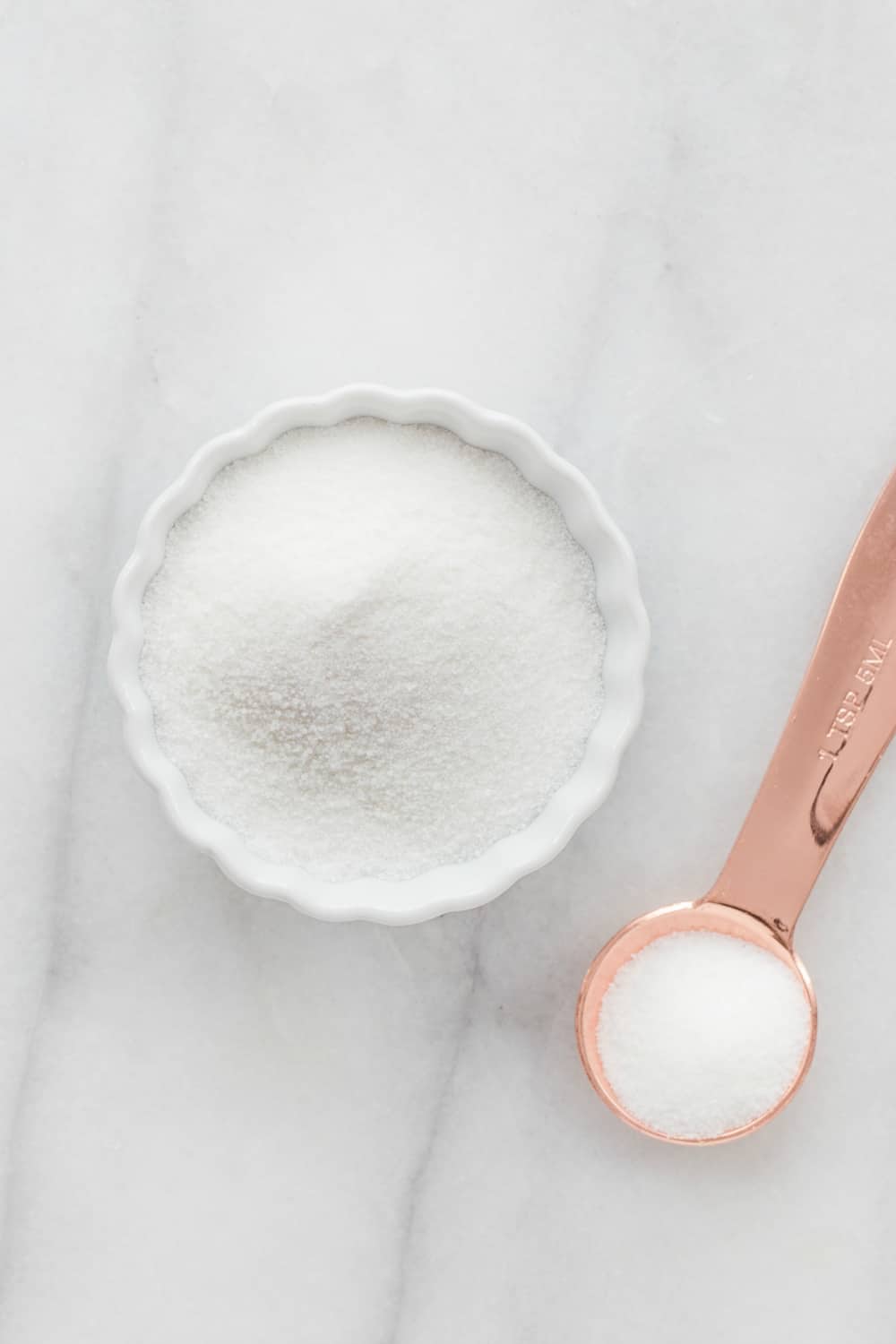
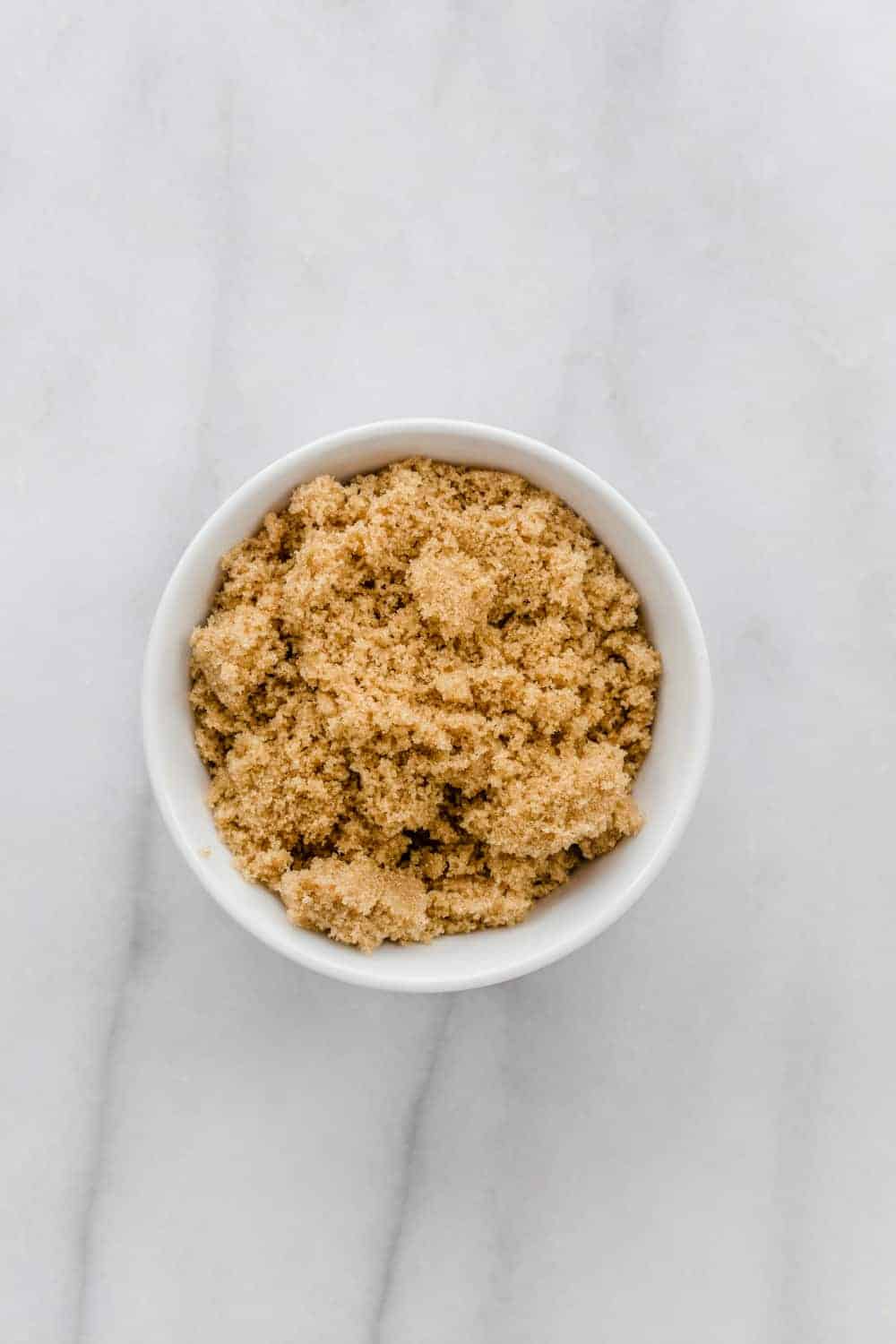
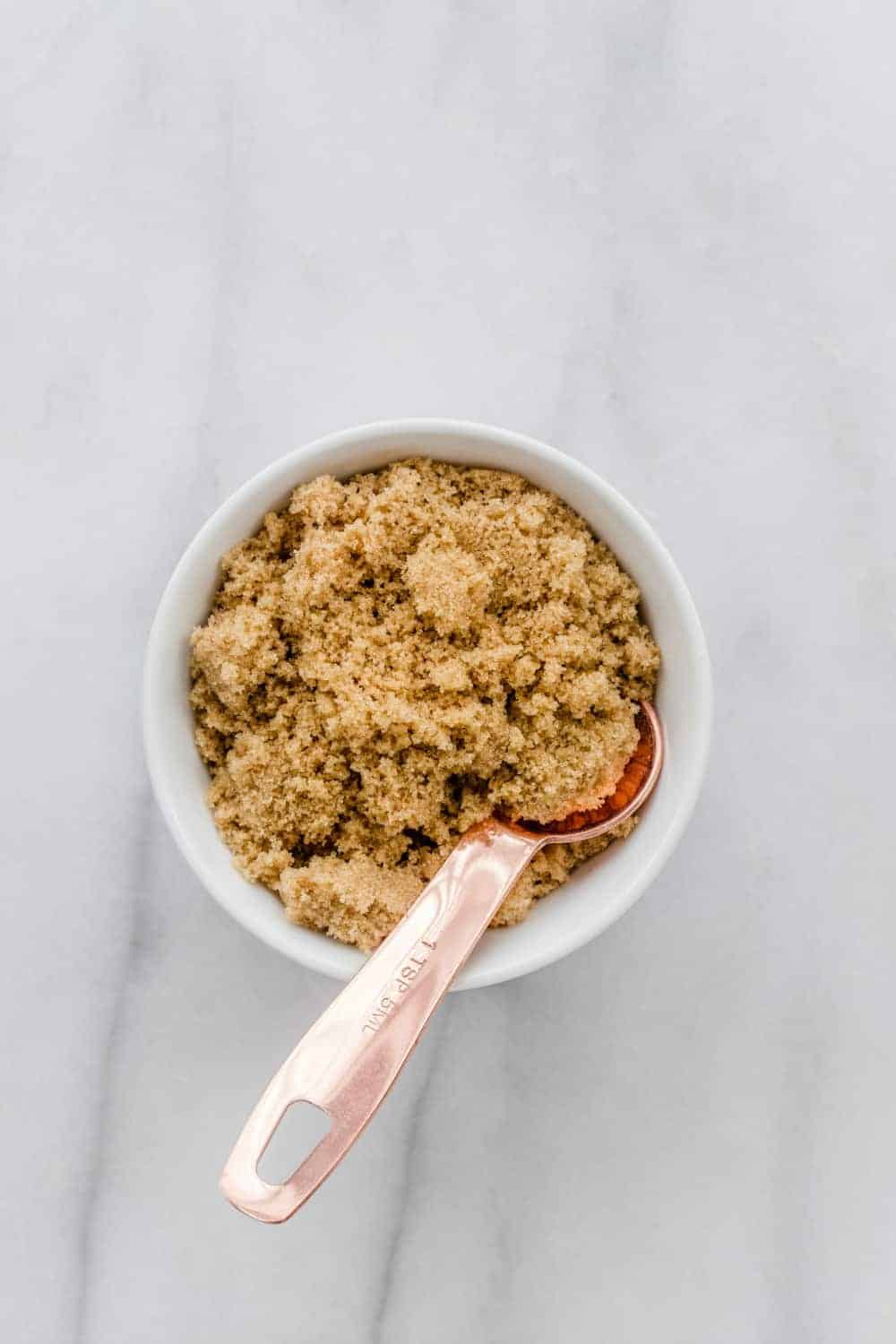
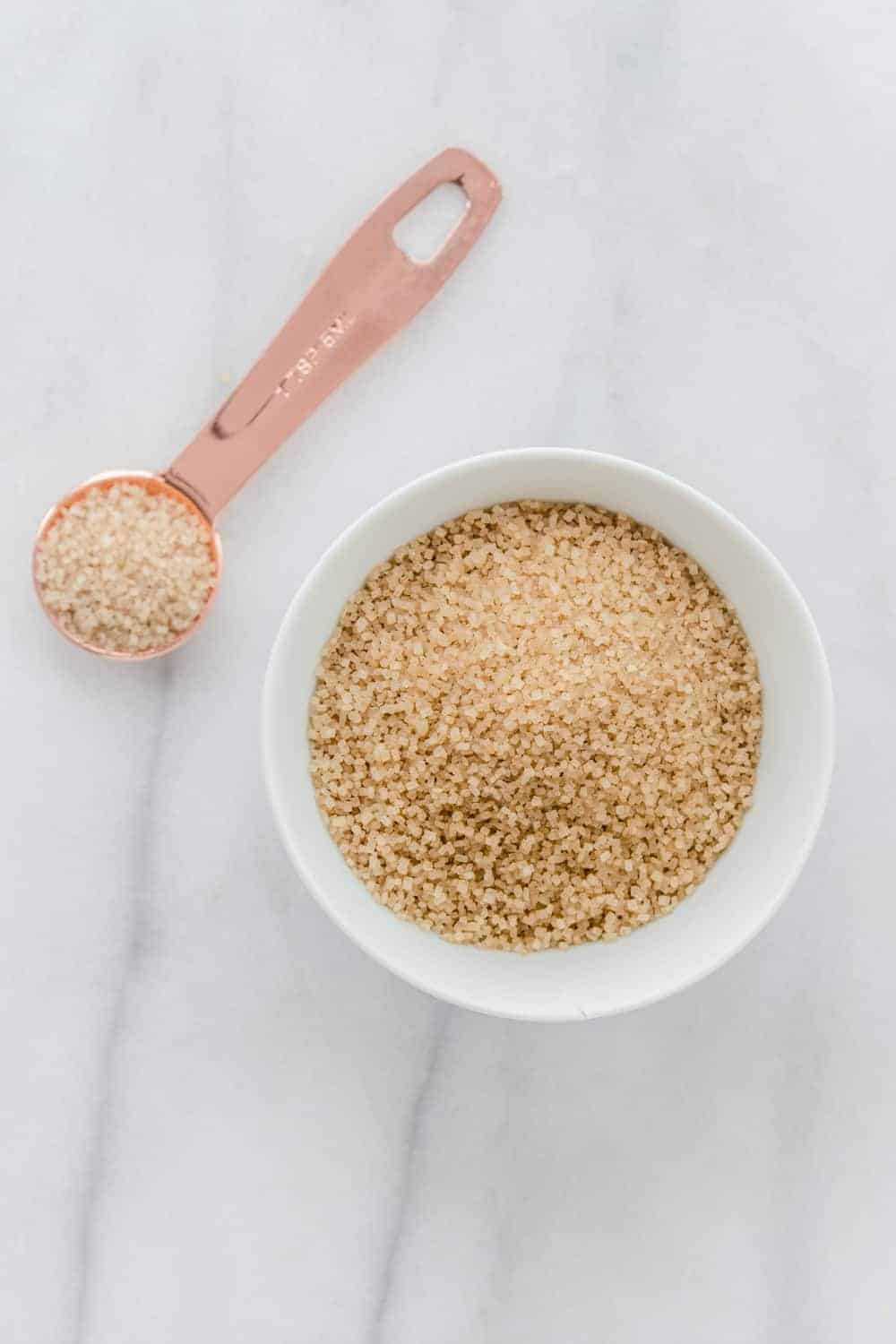
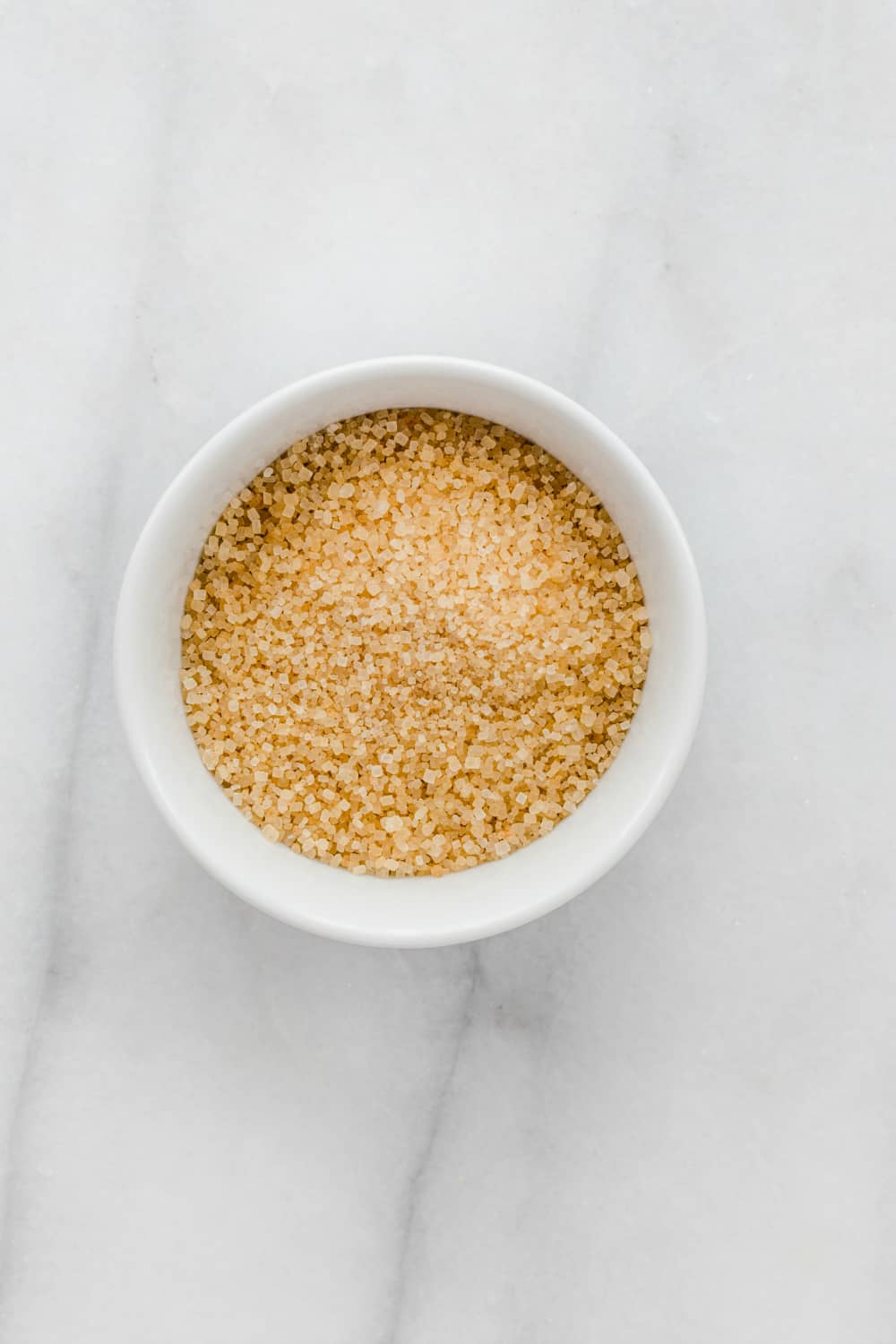
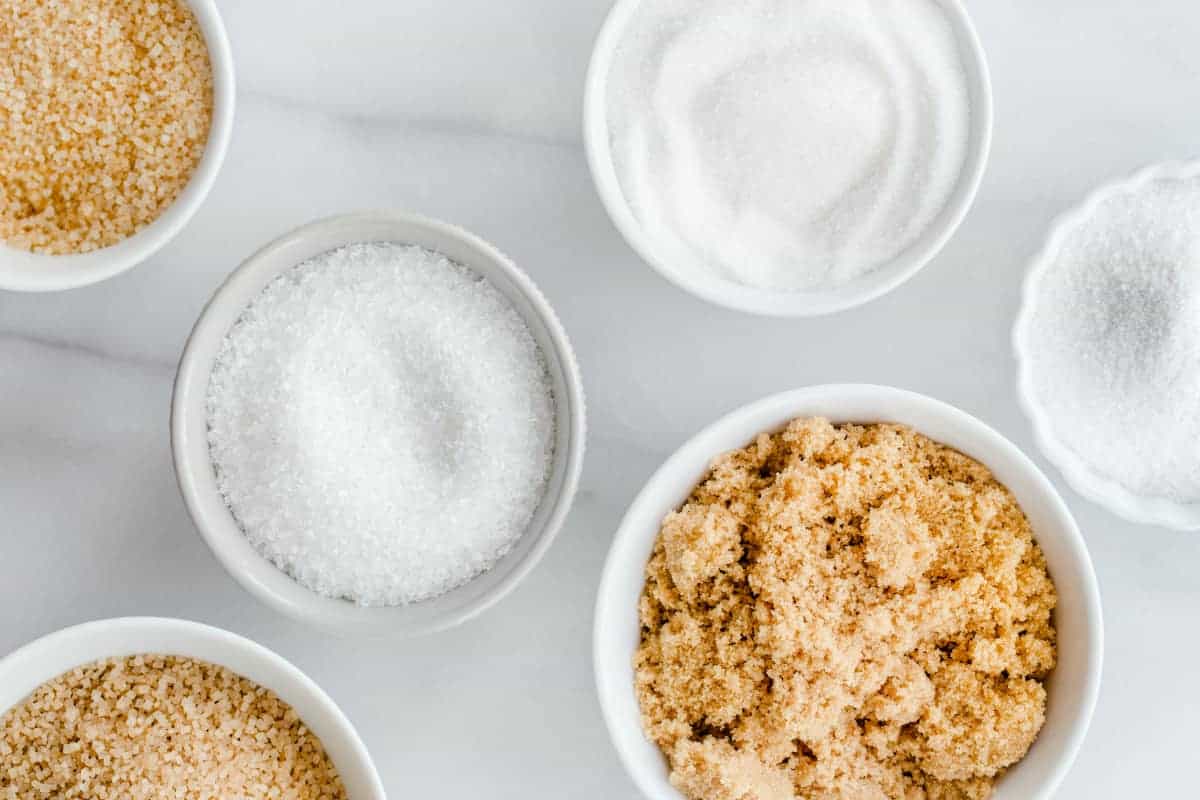









Ha ha! I thought I had every single type of sugar there is before I read this! Thnx Jamie:)
Thanks so much for stopping by, Amelia! I appreciate you taking the time to comment. Happy Baking!
-Jamie
I was looking at different types of decorating sugar recently, and many brands offer “sparkling sugar” or “pearlized sugar.” These are coarser than sanding sugar, similar to demarara sugar but a little longer, while still not being the coarsest sugar I’ve seen. My local bakery uses REALLY big crystals to decorate turnovers & other items made with puff pastry. I’ve never seen it on a shelf, though, so I’m not sure what it’s called. I would guess “coarse sugar,” but are there different sizes within that definition?
If you’re not familiar with it, one type of sugar you might enjoy is jaggery; it’s also known by many other names including panela, raspadura, and tapa de dulce. It’s very widely used in Latino and Indian cooking. I used to only be able to find it in ethnic food markets, but grocery stores with a good international section often carry it now. It’s an unrefined brown sugar, made from cane juice, which comes in a loaf or cake shape. You have to scrape it to get sugar crytals to use in cooking or baking; or you can just simmer it in a little bit of water & make a syrup. (I grew up in Costa Rica, and we used it almost daily to make “refrescos”–lemonade-like drinks made from tamarind pulp, carambola, pineapple peel, and other fruits.)
It has a wonderfully rich and complex caramel flavor, far beyond granulated brown sugar, and without the bitterness of molasses. It also comes is a wide array of “brownness”, from a light blonde (which tends to be softer) to almost black (which can be challenging to scrape!). It’s quite moist, which might affect some recipes adversely, but also helps it dissolve and blend easily. It can be pinched and pressed into many shapes and lacy patterns, and is great when you want sugar to stick to something easily, evenly, and/or thickly–like snickerdoodle cookies. Another unique property is that you can chop it into various sizes–from very fine to little chunks and cubes.
Thanks so much for stopping by! I appreciate you taking the time to comment. Happy Baking!
-Jamie
I’ve been spending hours lately both baking and shopping to “build-up” my choice of ingredients for baking. Like everything else in cooking-I’ve discovered that it is one learning process after another. The more I learn, the more I realize that I just don’t know as much as I thought-ingredients, measurements, techniques, they all make a difference in the “finished product”.
One of the things I’ve learned about sugars is that the ways they are processed, the soil they are grown in, etc. affect the nutritional impact on our bodies. Just like other foods-especially sweets- can just be “empty calories” with no significant contribution to our health, or like fresh blueberries, they can taste awesome and be one of the most healthy things we eat in a day!
When I’ve had foods made with truly “top notch” ingredients-they not only excite my tastebuds but seem to satiate sooner-like having a bite of something amazing beats a bowl full of boring!
When going through nutrition classes many, many, years ago while in a nursing program, I learned there are differnet kinds of sugars- sucrose, dextrose, fructose, etc. Each are absorbed by the body in a different way. So your discussion of sugars used in baking IS worth the time and effort to read.
Thanks so much for stopping by, Gayle! I appreciate you taking the time to comment. Happy Baking!
-Jamie
I am currently doing a project about how the ingredient combinations affect the human body and this blog helped so much. I really appreciate the help. Thanks.
Thanks so much for stopping by, Makaila! I appreciate you taking the time to comment. Happy Baking!
-Jamie
Interesting read. Thank you. Even as a baker I learnt a few things here!
Thanks so much for stopping by, Emma-Jane! I appreciate you taking the time to comment. Happy Baking!
-Jamie
Thanks, very helpful
Thanks so much for stopping by, Alejandra! I appreciate you taking the time to comment. Happy Baking!
-Jamie
I am have had issue with all brands of granulated sugar remaining sugar in anything I make. Has there been a change in processing. Frostings are especially a problem. I never had this problem until the last few years. I just made from scratch carmel frosting and ended up thowing it out… it was nothing but crystalyzed sugar. Now I have to go and buy my grandson some decent ones. I have made carmel frosting many times but it has never been the same the last few years.
Hi Susan! I haven’t experienced the issue you’re describing. Hopefully another reader might have some idea and might be able to help!
Jamie
How interesting! I love using Turbinado sugar for my coffee. I never even heard of Demerara but I guess that makes sense as you say it is most popular in the UK.
Thanks so much for stopping by, Scarlet! I appreciate you taking the time to comment. Happy Baking!
-Jamie
One of the hardest things I had to do when I moved to the Netherlands was to adapt my baking to their sugar! The brown sugar is more moist and coarser and the white sugar is very large! Now that I’ve gotten used to it, we’re moving back to the States. I am looking forward to reacquainting myself to American products, however. Especially to buying powdered sugar in containers bigger than 250 grams and to buying more than 2 pounds of flour at a time! Thanks for the great article!
Thanks so much for stopping by, Patt! I bet that was a challenge. I appreciate you taking the time to comment. Happy Baking!
-Jamie
Thank you! Thank you! So helpful!
Thanks so much for stopping by, Theresa! I appreciate you taking the time to comment. Happy Baking!
-Jamie